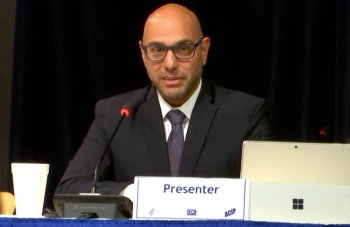
How retail acquisitions will accelerate adoption of value-based care
Industry-wide trend will help improve health equity, make care more affordable
Recent retail acquisitions in health care like those undertaken by
1) We’ll see more adoption of value-based care to advance
Major health care players are ramping up investment in tools supporting VBC as a strategic play to capture more health care spending. CVS’ acquisition of Oak Street Health is one example of a visible commitment to VBC that lowers costs and improves outcomes. By combining its health services with Oak Street Health, CVS VBC gained a more expansive footprint. Oak Street had more than 600 primary care providers and 169 senior-focused medical centers across 21 states before the acquisition. The company’s focus on seniors aligns with the area of the market most focused on VBC—Medicare. I expect many other big retailers will follow this model.
According to a Health Care Payment Learning & Action Network
Data transparency is critical to the success of VBC for these organizations. It’s vital for retail locations to know which specialists are in-network and nearby. With greater transparency, patients realize greater access and lower cost of care—more convenient primary and specialty care and lower copays when referred to in-network specialists. Retailers like Amazon, CVS, and Walgreens will need access to technology that enables them to quickly search for specialists that accept the patient’s insurance and can schedule the patient.
2) We’ll see greater use of primary care and a growing need for specialist advice.
A nationwide primary care footprint will increase preventive and routine care, especially in
However, demand for specialty care will also rise due to increased access to primary care. More PCP visits will lead to early intervention for chronic conditions and cancer, which will increase the number of specialty care appointments in an already overburdened segment of the industry.The upside is that more patient engagement with primary care will support the goals of VBC and may reduce the use of urgent care and emergency departments for routine care. This will lower costs and make better use of scarce and expensive resources. However, we’ll likely see existing
3) We’ll need tools that enable better access to care
With more retail health clinics reaching rural areas due to these acquisitions, PCPs will need the right tools to keep up with patient demand. Retail health companies will demand tools to leverage specialist advice without long wait times for appointments, clunky video calls, extensive research, and emergency visits. This is crucial as specialists are already in short supply, and it’s having a ripple effect across the health care system. Patients can wait for months for an appointment with a specialist, and their waiting rooms often are packed with patients referred for minor ailments or symptoms that can be treated by a PCP.
Leveraging data can save patients time and money by eliminating the need for in-person visits and decreasing administrative overhead, which also saves providers time, money and resources. PCPs need better tools to know when to route a patient for a face-to-face visit that is nearby and in-network.
Digital health consults, often referred to as
Past retail acquisitions will solve significant pain points in primary care around cost, quality and accessibility to care. We’ll see more retailers making a visible commitment to VBC and larger investments in tools that will improve access to specialist advice. Retailers are spearheading the move to VBC, which is essential for our patients and the health system.
Brooke LeVasseur is CEO of AristaMD
Newsletter
Stay informed and empowered with Medical Economics enewsletter, delivering expert insights, financial strategies, practice management tips and technology trends — tailored for today’s physicians.
















